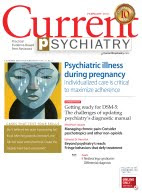Although “the difficult patient” is not a diagnosis or specific clinical entity, clinicians universally struggle with such patients and have an immediate sense of shared experience when describing the phenomenon. In primary care, O’Dowd aptly described this type of patient as the “heartsink” patient, meaning the practitioner often feels exasperation, defeat, or dislike when he or she sees the patient’s name on the schedule.
This article discusses the literature on this topic and provides strategies for dealing with difficult patients in psychiatric practice.
Read full text (free access)
Listen to Dr. Battaglia explain the advantages of "plussing" your difficult patient
Comment on this article
Email the editor


